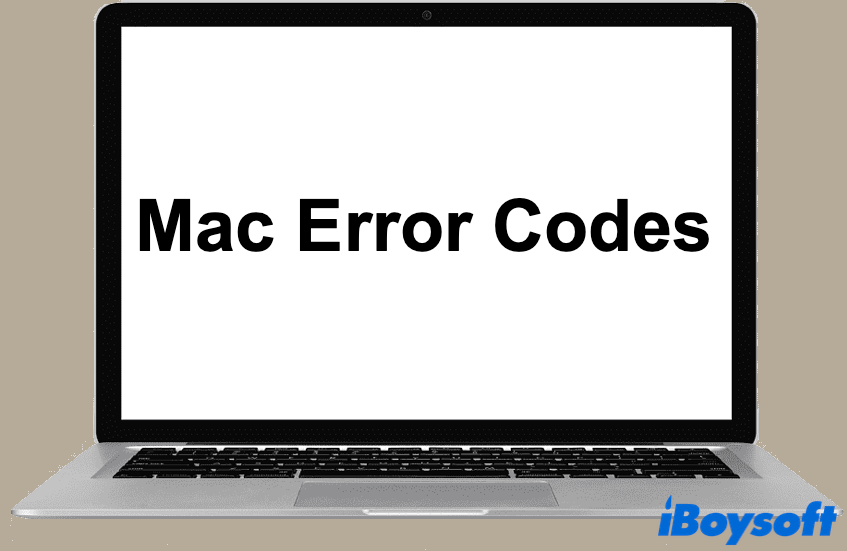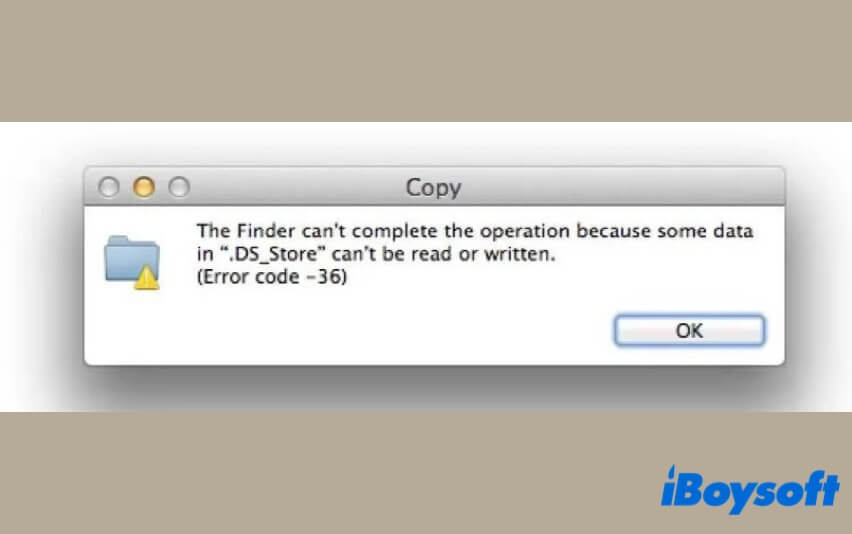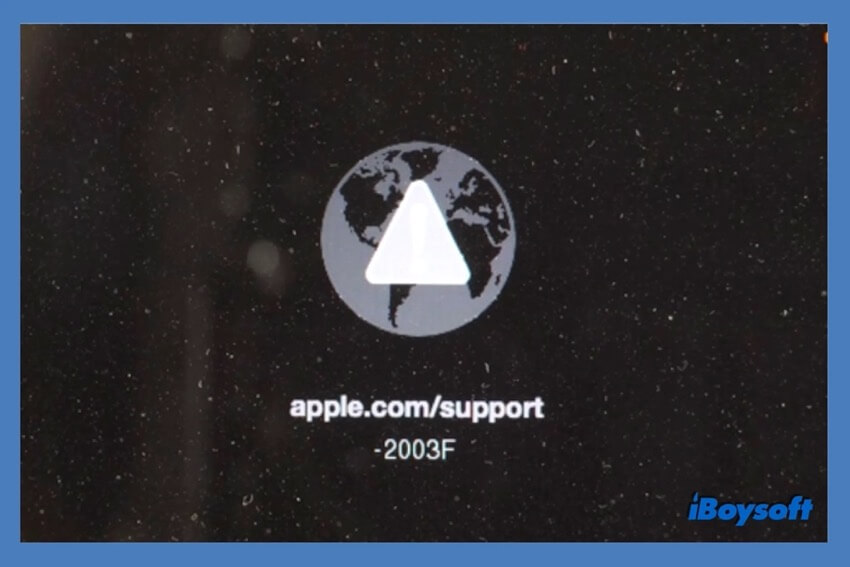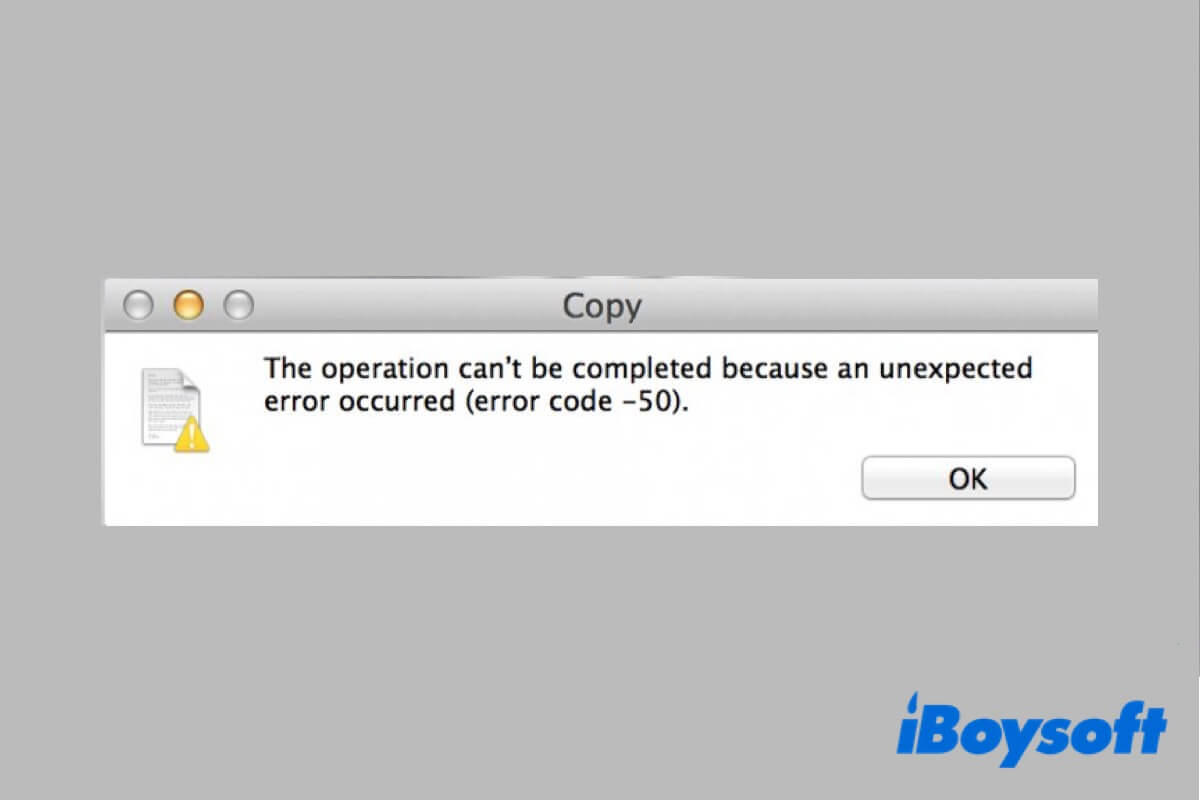Nothing's perfect, even for Macs. Sometimes, when you are trying to get something done, and an error code pops up, how annoying! Actually, encountering Mac error codes is almost an inevitability in your daily life.
In this post, we list some common error codes on Mac, along with their fixes, to help you better understand, and also deal with them more confidently. Without further ado, let's get started!
What are Mac error codes?
Mac error codes are a way of recording problems encountered by your Mac. When an error code window pops up on the screen, it means the macOS detected something's going wrong on your Mac.
It is also a way of human-computer interaction. By sending you a notification with a specific error code, your Mac wants you to know that it runs into some trouble. Besides, error codes on Mac may be caused by some simple and harmless problems, or some much more serious system-related issues.

Know what is Mac error code now? Share this content with your friends!
Common Mac error codes and fixes
We document some common error codes that are most frequently encountered by Mac users, and make them into a Mac error codes list, let's check them out!
Mac error code 10661
The Mac 10661 error usually appears when you install a third-party app downloaded from a browser. It is a "kLSExecutableIncorrectFormat" error that means the app isn't executable or in the wrong format, or the app isn't authenticated by Apple or not for your full access.
To fix this error, you can check if the format of the app is .exe, change the security settings, change your privilege for the app installer, or re-download the installer.
Mac error code 36

Mac Finder error code 36 is so common, and we even have a whole article for it. If Mac Finder fails to read or write a file on your Mac, this error code will pop up. It often happens when you try to transfer files between devices. Actually, this error code is caused by the invisible DS_Store file.
To get rid of error code 36, you should open Mac Terminal, and type dot_clean. Next, drag and drop the folder contains.DS_Store files into the Terminal window, then hit Return.
Mac error code 41
Mac error code 41 covers a wide range of possible problems. It can be caused by outdated software or hardware of your Mac, and a corrupted system file or directory. Also, documents harmed by malware may result in this error code as well.
To fix error code 41, you should update the outdated software, or uninstall it directly. Also, update your Mac to the latest macOS version, like macOS Monterey or macOS Ventura may help. Furthermore, check your device for viruses and clear cache on Mac may help you get rid of this error code.
Mac error code 50
Mac error code 50 is one of the Apple error codes. It appears when you fail to copy or move files from a storage device, like an external hard drive, or a USB flash drive. Generally speaking, this would happen due to bad or corrupted data in the files.
To fix this problem, you can change the file's name or its extension before you move it, and change it back later. Or, you can try to repair the external storage device using Disk Utility on Mac.
Mac error code 2003f

Mac error code 2003f usually happens when you try to reinstall macOS in Mac recovery mode, and it is mainly caused by a bad internet connection. In addition, it also possibly relates to virus infection, hard disk errors, and other reasons.
To fix error code 2003f, you can check your internet connection first. Then, you can run First Aid in Disk Utility to try to repair disk errors. If these two solutions fail, you can reinstall macOS.
Mac error code 8003
Error code 8003 is the last error code in this Mac error codes list. It will show up when you can't empty the files in Mac Trash because of some permission issues.
To fix error code 8003 is rather easy. Just hold the Option key when you click the Empty button in Trash, it will force delete the files in the Trash, and remove any file that causes this error code at the same time.
Think this post helpful? Share it to more people who need it!
Bonus part: How to fix most Mac error codes?
If you are encountering other Mac error codes that are not in the above Mac error codes list, don't worry! There are a few solutions you can take to fix most Mac errors. You can try them one by one to see if your problems can be solved or not.
- Restart a file, or an application, when it's necessary, reboot your Mac.
- Keep your software on Mac updated, and update macOS to the latest version.
- Run First Aid in Disk Utility on your Mac.
- Clear system caches and delete junk files on your Mac.
If all of the four solutions are not work for you, you should find other solutions on the internet or the Apple forums. Just remember, most Mac error codes are easy to fix. So when it pops up, calm down first!
More error codes? Read the related articles:
Conclusion
In this article, we provide an Apple error codes list for you, and explain to you what are Mac error codes. We hope after reading this post, when encounter error codes on your Mac in the future, you are able to deal with them more confidently.
